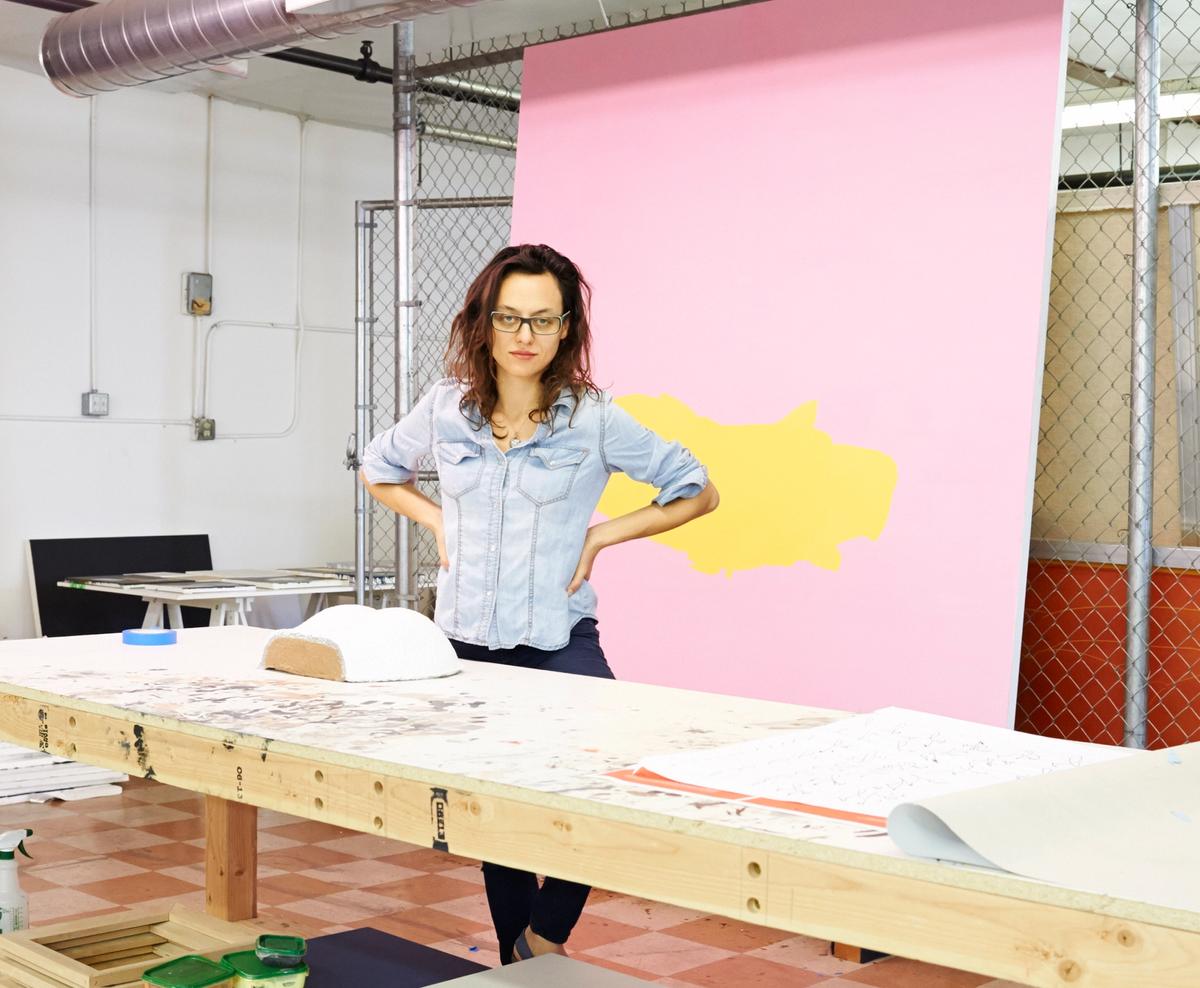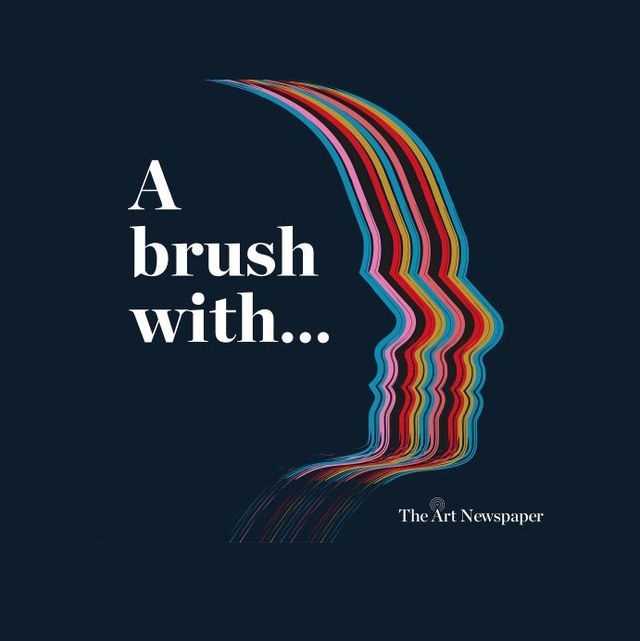In the last episode of the present series, Ben Luke talks to Tala Madani, the Tehran-born, Los Angeles-based artist, about the influences and cultural experiences behind her remarkable paintings and animations. She talks about art's role in shaping her experience in the US after she had moved to Oregon from Tehran as a teenager, about the early influence of Francis Bacon, and about a range of artists she continues to think about today, from Giorgio de Chirico to Lee Lozano and Paul McCarthy.
As always on A brush with... Tala is asked about the literature and music that have played key roles in her life, and reflects on the influence of Iranian poetry, her enduring fascination with Stanisław Lem's Solaris, her love of Miles Davis and Léo Ferré and about how "sometimes I need to go to Iran, in my brain, and I listen to music that emotionally puts me in Iran". Plus, she answers the other questions we ask all our guests, about studio rituals, the one artwork they would want to live with and, ultimately, what art is for.
A brush with… series 2 runs from 2 December-3 February 2021 with episodes released on Wednesdays. You can download and subscribe to the podcast here.
This episode is sponsored by Bloomberg Connects.

Tala Madani's Music Man (2009) Courtesy of the artist and Pilar Corrias Gallery
Tala Madani on... growing up in Iran in the 1980s
"After the [Iranian] revolution, during the Iran-Iraq war, there weren't a lot of 'cultural events' at that time [...] so there was definitely a deficiency in that space. [...] I don't really have a lot of romantic relationships with cultural moments of the 1980s that maybe my generation in different countries will have grown up with, because I didn't experience them on that level. Painting for me is never romantic. My engagement with art is never romantic. It's always a matter of externalising. or making sense of events."
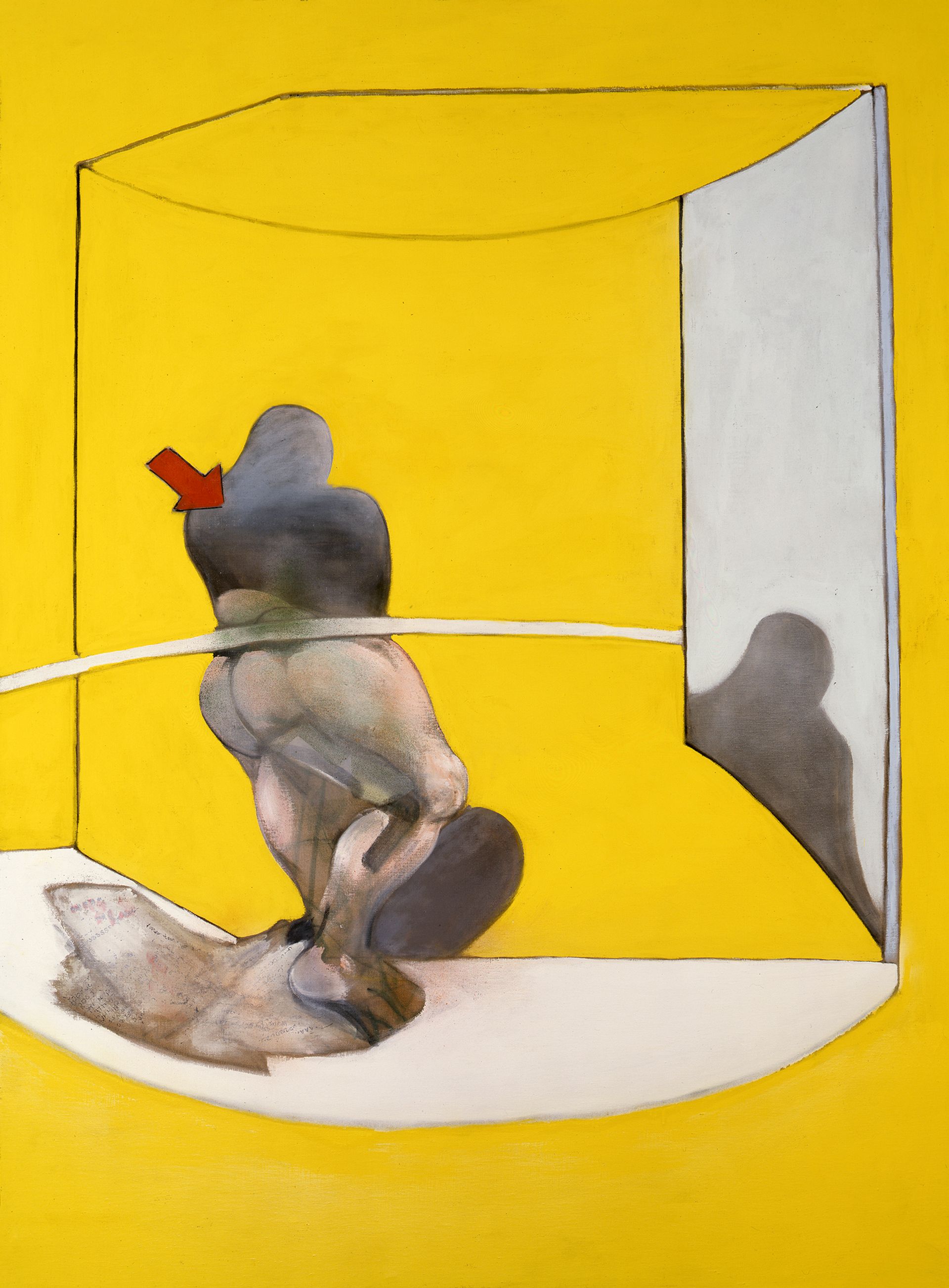
Study From the Human Body (1986), Francis Bacon.
... the first artist she loved
"It is so cliche of my generation, but it's Francis Bacon. He's probably the first person that I gasped to, that I felt raw with and I admired. […] When I was a kid, when I loved something, I would just mimic it, [...] but then I realised that if you admire something you can't just mimic its style, you have to understand its position, its philosophy. If that's what you admire then that is what you re-enact. So what is Bacon doing? He's breaking. He's breaking things, breaking with taste. To some extent he's designing a stage where he's allowed to then break through things and in that I definitely I still carry him. And I love the synonymity of desire and fear, desire and disgust, that sort of shattering [in his work]. It's a great problem. And I think it's universal, something that human beings deal with from infancy to death."
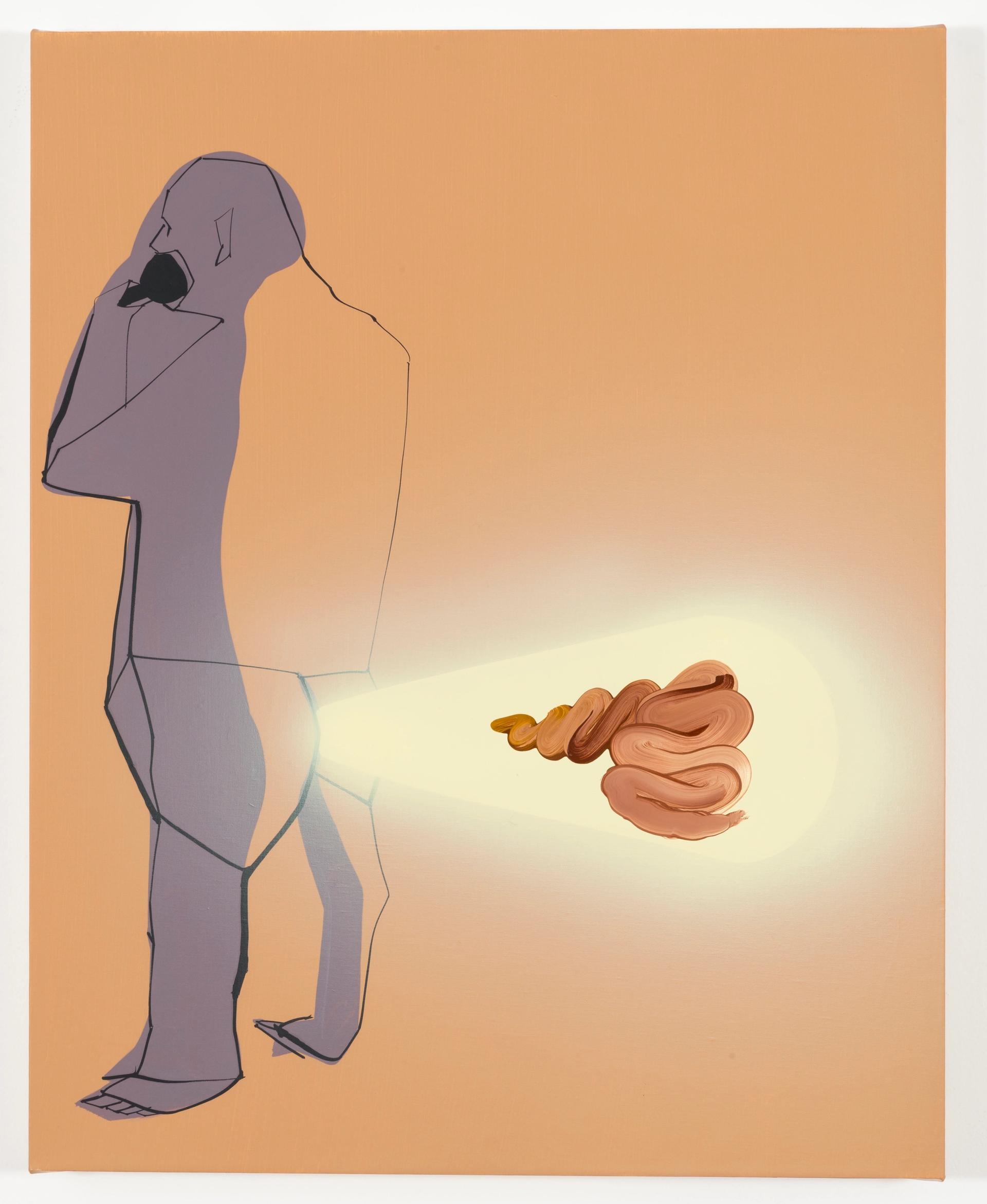
Tala Madani's Rear Projection: Grand (2013) Courtesy of the artist and Pilar Corrias Gallery
... the responsibility of an artist
"I think we should be really conscious of the position that we put forward as makers of art. What is that position? [...] Is it conservative? Is it basically confirming values of the past? Or is it willing to challenge and push through? We're in this moment where so much is accepted and we don't really have a clear value structure for what is contemporary culture, or what is the future. I'm very critical of nostalgia in contemporary painting. I think the problem of nostalgia is that it confirms values of the past. I read someone saying they don't understand the problem of nostalgia. 'So much of what we make today is so shit,' they said. They like this stuff from the past. And I want to distinguish that. To consume things of the past is very different than to make things that still resonate the past. That's the problem. That is why things are shit right now. To be a consumer of culture is very different than to be a maker of something fresh, in terms of a moral position."
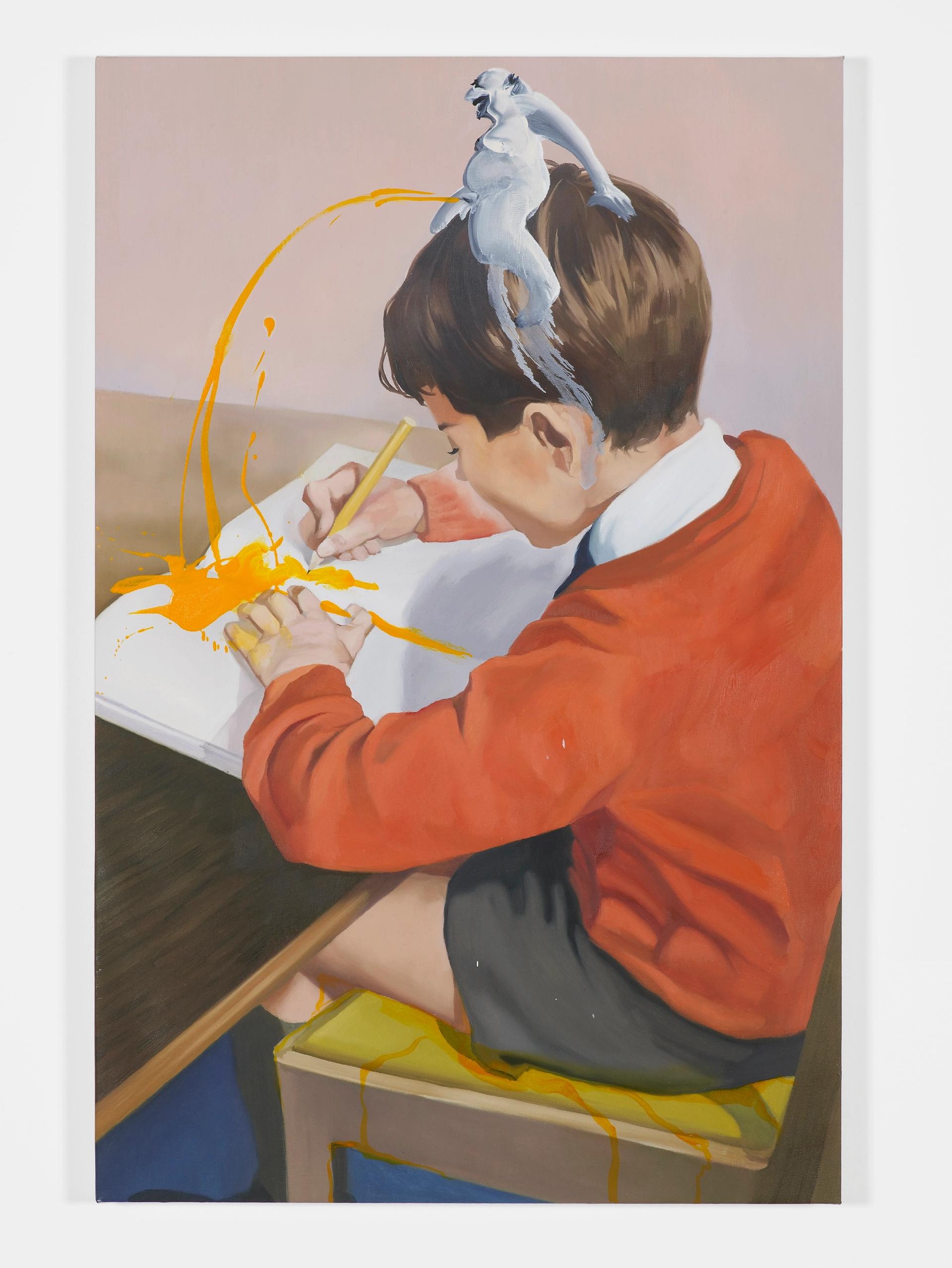
Tala Madani's The Lesson (2014) Courtesy of the artist and Pilar Corrias Gallery
... why today's artists play it safe
"Sadly, money has destroyed so much of what people feel at liberty to do. In terms of museum shows, it's so expensive to ship a show, so if a gallery will pay for it all then you show their works, right? There's no funding in America and all this stuff has really changed young artists—they have this fearful politeness, a fear of losing it all. And then everything becomes so mediocre and without any spine. That's been the trend, culturally, to become more conservative in the way we're expressing ourselves. [...] Everybody's doing blurry things. I'm fascinated by that. I think it's the fear of saying something concrete."

Tala Madani's Nature Nurture, 2019 Courtesy of the artist and Pilar Corrias Gallery
... the origins of her 2019 series Shit Moms
"I had taken eight months off from painting to take care of my second born and when I came back to the studio, I thought I'd make a few paintings to get rid of all the things in my mind's eye, which was a little baby. So I made a little bathroom painting for myself—a little mother holding a child. I looked at it and I couldn't stand it. It was disgusting. It was so kitsch. It wasn't possible. So I immediately tried to smear it away. Luckily, I smeared the female figure first before the baby figure, otherwise I might have never seen the idea. So then there was a muddy figure with a pristine child and I thought: 'That's my mother and child. Why haven't I seen this before? [...] Okay, I guess I have to go into this now and understand what excited me.' I think these experiences in the studio are what make me trust the material [of paint]. It shows you what is in the back of your head, that which you haven't accessed yet."
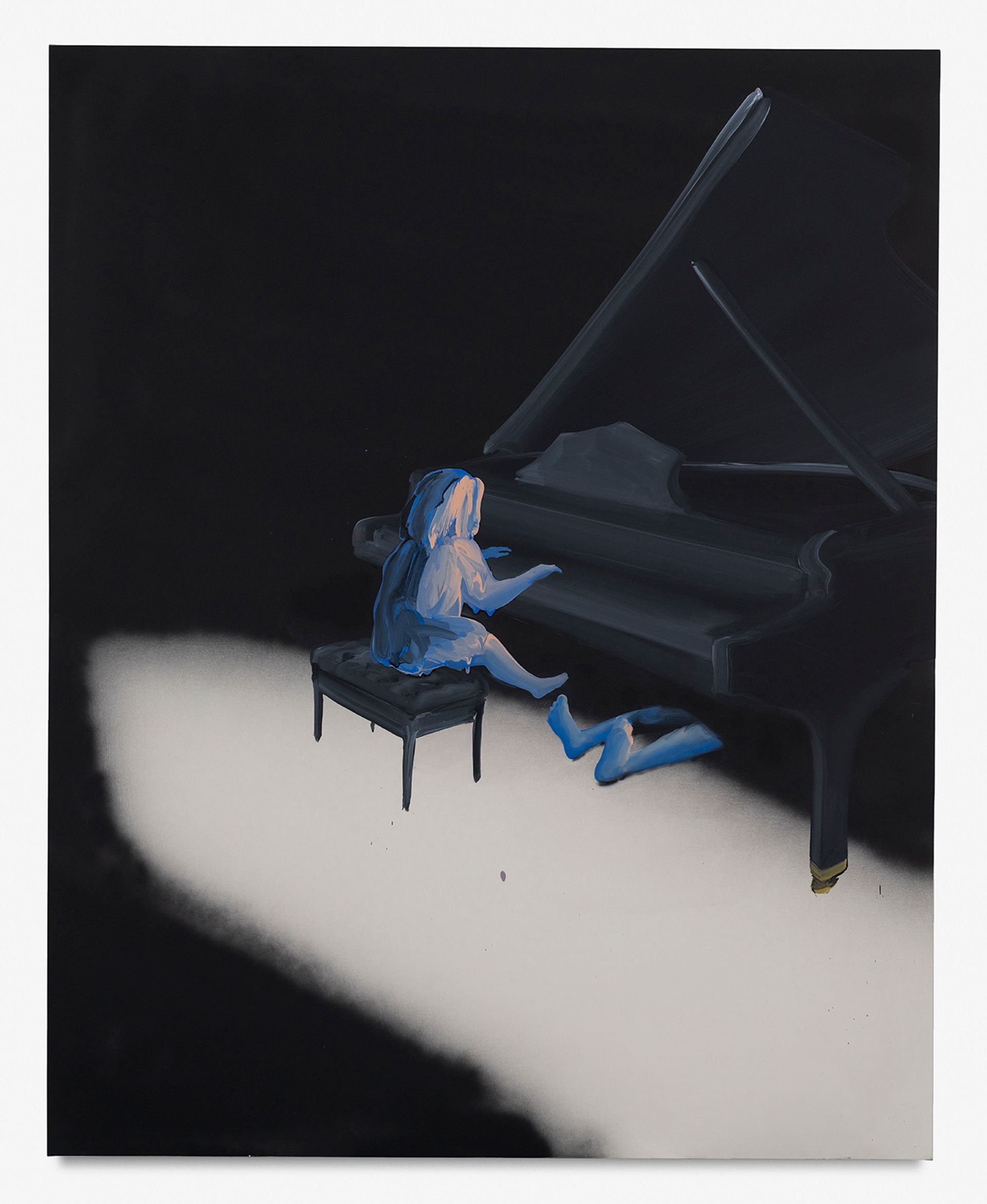
Tala Madani's Untitled (Melody), 2020 Courtesy of the artist and Pilar Corrias Gallery
... what art is for
"I have big expectations of art. I think art is for shifting consciousness. I think it's to externalise events, to make sense of them. I think it's for us to know humanity. And a doodle will suffice, so everyone should start getting a pen on paper and make marks and believe that they will change consciousness through that. Their own consciousness first, and thereby everything else."
• Tala Madani has an exhibition opening at Pilar Corrias in London in May (assuming the UK lockdown has eased by that point). She also has an exhibition opening later this year at the Museum of Contemporary Art (MOCA) in Los Angeles.


